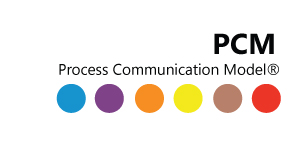The process of selecting an astronaut is no easy task. The people who select the astronauts are choosing from the best of the best, physically and mentally. There are many factors such as cooperation, precision and thoroughness in work, efficiency, etc., that need to be taken into account when selecting astronauts that will be the most mentally strong and capable in situations of intense stress and pressure.
In 1977, Dr. Terry McGuire, NASA’s lead psychiatrist who was in charge of the selection of candidates, invited Dr. Taibi Kahler to attend and participate in interviews during the selection process. His task was to sit in the corner of the room and observe. Taibi used Process Communication Model to place candidates in one of six categories according to their dominant personality type. He was able to determine easily their basic personality characteristics, strengths and weaknesses. He observed their verbal expression, the way they talked about themselves, their achievements, the things that matter to them, etc. But in the same time he was also paying attention to the non-verbal signs such as their seating position, facial expressions, gesticulation and unconscious movements.
After comparing notes on several candidates, it was discovered that after only 10 minutes, Dr. Kahler’s approach had revealed as much or more about a candidate than a standard psychological interview of several hours. Dr. McGuire was fascinated by the results and decided to invite Dr. Kahler to join NASA and use his PCM methodology in further selection.
After many years of PCM application, the data shows that one personality type in particular has a much higher percentage in the astronaut core than in the general population. The Persister personality type is far more likely to succeed in the astronaut selection process. For example, in the 1984, ’85, ’87 selection cycle, 71% of those selected were base Persisters. They dominate among astronauts due to their underlying drive to be perfect, dedicated and tenacious.
Since Persisters show little emotion and find it difficult to understand other people’s sensitivity they tend to get along well with Thinkers who are logical and rational like them. This is particularly important because Thinkers are the second most present personality type among astronauts. Statistics show Persisters and Thinkers make up 93% of the astronaut core!
It is interesting that Promoters are rarely selected for this job. Only 1% of candidates applying for the position of the astronaut have Promoter as a dominant personality type. Because of their informality, impulsiveness, dynamism and possible irresponsibility when under stress, this is a very dangerous personality type for an astronaut to have.
Later it turned out that for good cooperation in the long run, there must be harmony in relationships, and that is why special attention was focused on Harmonizers who are able to maintain a pleasant atmosphere and are oriented towards people a lot more than other types. Harmonizers are the third most common personality type among astronauts.
Just like Promoters, Rebels also rarely become astronauts because they tend to be very energetic and spontaneous. They are prone to conflicts and tend to avoid responsibility when under stress.
One of the few astronauts with this type of personality was Sally Ride.
Since Imaginers are characterized by creativity, imagination and shyness, this personality type is nonexistent at NASA.
Persisters and Thinkers are the most dominant personality types among astronauts; Harmonizers are in third place, while Rebels, Imaginers and Promoters are hardly chosen in the selection process. It is very interesting that even though Persisters make about 10% of the entire population, there are more than 70% astronauts with this personality type. On the other hand, Imaginers make about 10% of the entire population, but are practically nonexistent at NASA.
However, taking into account how the quality of interpersonal relationships affects the quality of the work done, it can be concluded that the application of Process Communication Model® has enabled NASA to improve the cooperation among team members of research expeditions, and consequently the quality of their research.
Jelena Spremo



 Čeština
Čeština Srpski
Srpski Portuguese
Portuguese 